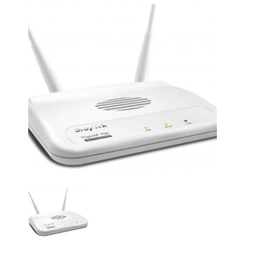Home »
IoT (Internet of Things) Tutorial
IoT Data Communication - Relay Access Point (RAP)
By Shahnail Khan Last updated : November 14, 2023
The Internet of Things (IoT) is rapidly expanding, with billions of devices connected to the internet and generating vast amounts of data. This data has to be transferred to the cloud or other central servers for processing and analysis. However, IoT devices often have limited power and processing capabilities, making it difficult to communicate data over long distances.

Relay Access Points (RAPs) can help to extend the range and reliability of IoT data communication. RAPs are wireless devices that connect IoT devices to the cloud or other central servers. They receive data from IoT devices and forward it to the cloud or other central servers over a longer distance and at a higher bandwidth than the IoT devices could achieve on their own.
Benefits of using RAPs for IoT data communication
Let’s have a look at the several benefits of using RAPs for IoT data communication.
- Extended range: RAPs can extend the range of IoT communication, allowing IoT devices to be deployed in areas where direct communication to the cloud or other central servers is not possible.
- Improved reliability: RAPs can improve the reliability of IoT communication by providing redundancy and retransmission of data. This is especially important in harsh environments where wireless communication can be unreliable.
- Reduced power consumption: RAPs can help to reduce the power consumption of IoT devices by offloading the energy-intensive task of long-distance communication to the RAP. This can extend the battery life of IoT devices and reduce the need for maintenance.
- Improved security: RAPs can help to improve the security of IoT communication by providing encryption and authentication services. This can help to protect IoT devices from unauthorized access and data theft.
Types of Relay Access Points (RAPs)
There are two main types of RAPs-
- Static RAPs: Static RAPs are fixed devices that are typically installed in a central location. They are ideal for applications where IoT devices are deployed in a fixed location, such as in a smart factory or smart building.
- Mobile RAPs: Mobile RAPs are portable devices that can be moved to different locations. They are ideal for applications where IoT devices are deployed in a mobile environment, such as in agriculture or transportation.
How RAPs work?
RAPs work by receiving data from IoT devices and forwarding it to the cloud or other central servers using a variety of wireless technologies, such as Wi-Fi, ZigBee, and LTE. RAPs can also be used to aggregate data from multiple IoT devices before forwarding it to the cloud or other central servers. This can help to reduce the bandwidth requirements of IoT networks.
Use cases for RAPs in IoT
RAPs can be used in a variety of IoT applications. Some of these applications are as follows-
- Smart cities: RAPs can be used to connect IoT devices in smart cities, such as traffic lights, parking meters, and air quality monitors.
- Smart factories: RAPs can be used to connect IoT devices in smart factories, such as sensors that monitor machine performance and environmental conditions.
- Smart buildings: RAPs can be used to connect IoT devices in smart buildings, such as thermostats, lights, and security systems.
- Smart agriculture: RAPs can be used to connect IoT devices in smart agriculture applications, such as sensors that monitor soil moisture and crop health.
- Smart transportation: RAPs can be used to connect IoT devices in smart transportation applications, such as sensors that monitor traffic flow and vehicle conditions.
Conclusion
RAPs are a valuable technology for extending the range and reliability of IoT data communication. They can be used in a wide variety of IoT applications to improve the efficiency, reliability, and security of IoT networks. Additionally, RAPs can help to reduce the cost of deploying and maintaining IoT networks and improve their scalability.
RAPs are poised to become a critical component of future IoT networks, enabling a new generation of innovative IoT applications.
Advertisement
Advertisement